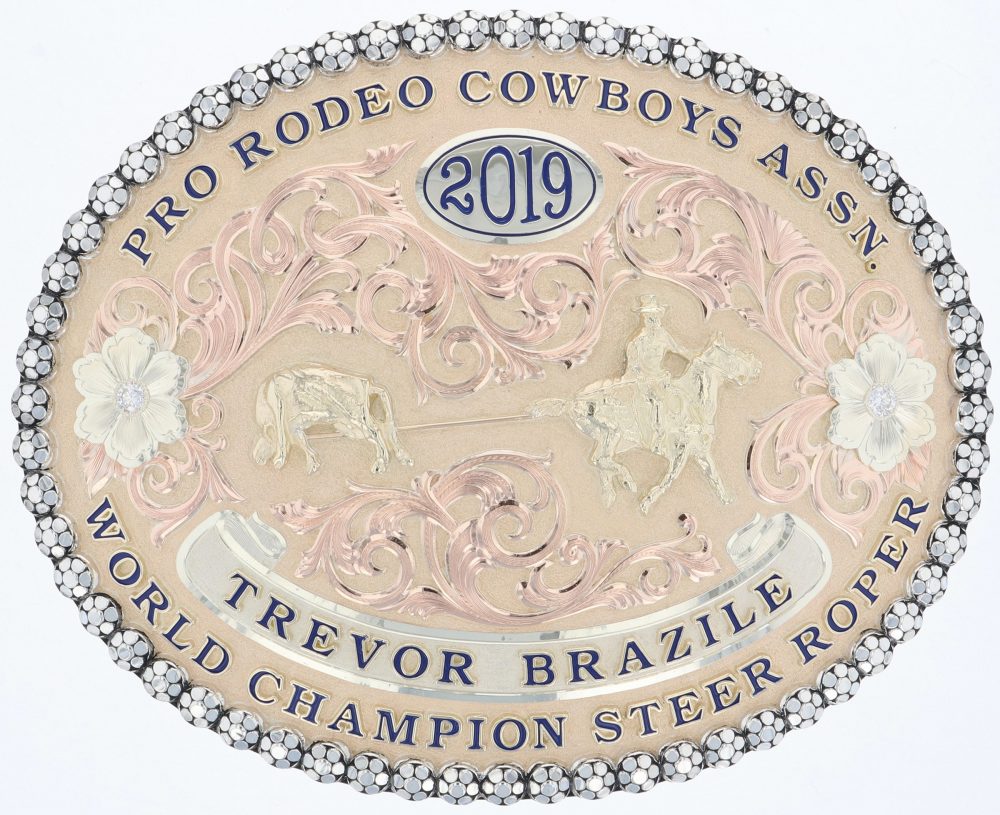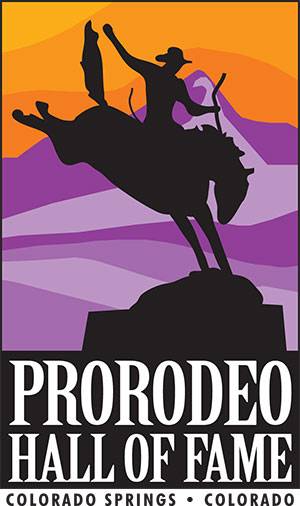Rodeo Events
All-Around
The PRCA world all-around champion is considered by many the most talented and versatile cowboy in the sport. The PRCA Cowboy who wins the most prize money in a year while competing in at least two events, earning a minimum of $3,000 in each event, wins the world all-around championship.
Rodeo Events
Bareback riding, developed in the rodeo arena many years ago, consistently produces some of the wildest action in the sport. A bareback rider begins his ride with his feet placed above the break of the horse’s shoulder. If the cowboy’s feet are not in the correct position when the horse hits the ground on its first jump out of the chute, the cowboy has failed to “mark out” the horse properly and is disqualified. Throughout the eight-second ride, the cowboy must grasp the rigging (a handhold made of leather and rawhide) with only one hand.
A rider is disqualified if he touches his equipment, himself or the animal with his free hand or bucks off. The rider is judged on his control during the ride and on his spurring technique. The score also is based on the rider’s “exposure” to the strength of the horse. In addition, the horse’s performance accounts for half the potential score.
Wrestling a steer requires more than brute strength. The successful steer wrestler, or bulldogger, is strong but he also understands the principles of leverage. The steer wrestler on horseback starts behind a barrier, and begins his chase after the steer has been given a head start. If the bulldogger leaves too soon and breaks the barrier, he receives a 10-second penalty. The steer wrestler is assisted by a hazer, another cowboy on horseback tasked with keeping the steer running in a straight line. When the bulldogger’s horse pulls even with the steer, he eases down the right side of the horse and reaches for the steer’s horns. After grasping the horns, he digs his heels into the dirt. As the steer slows, the cowboy turns the animal, lifts up on its right horn and pushes down with his left hand in an effort to tip the steer over. After the catch, the steer wrestler must either bring the steer to a stop or change the direction of the animal’s body before the throw or is disqualified. The clock stops when the steer is on his side with all four legs pointing the same-direction.
Like bronc riding, tie down roping is an event born on the ranches of the Old West. Sick calves were roped and tied down for medical treatment. Today, success in tie down roping depends largely on the teamwork between a cowboy and his horse. After the calf is given a head start, horse and rider give chase. The contestant ropes the calf, then dismounts and runs to the animal. After catching and flanking the calf, the cowboy ties any three of the animal’s legs together using a “pigging string” he carries with his teeth until needed. If the calf is not standing when the contestant reaches it, the cowboy must allow the animal to stand. When the cowboy completes his tie, he throws his hands in the air as a signal to the judge. He then remounts and allows the rope to become slack. The run is declared invalid if the calf kicks free within six seconds. As with any timed event, a 10-second penalty is added if the roper does not allow the calf the proper head start – this is known as “breaking the barrier.”
Rodeo’s “classic” event, saddle bronc riding, has roots that run deep in the history of the Old West. Ranch hands would often gather and compete among themselves to see who could display the best style while riding untrained horses. It was from this early competition that today’s event was born. Each rider must begin his ride with his feet over the bronc’s shoulders to give the horse the advantage. A rider who synchronizes his spurring action with the animal’s bucking efforts will receive a high score. Other factors considered in the scoring are the cowboy’s control throughout the ride, the length of his spurring stroke and how hard the horse bucks.
Disqualification results if, prior to the buzzer which sounds after eight seconds, the rider touches the animal, himself or his equipment with his free hand; if either foot slips out of a stirrup; if he drops the bronc rein; he fails to have his feet in the proper “mark out” position at the beginning of the ride; or he bucks off.
Click here for a list of Saddle Bronc Riding World Champions.
Team roping is unique in that two cowboys work together for a shared time. The first cowboy, known as the “header,” ropes the steer either by the horns, around the neck, or “half head” which is one horn and the neck. After this catch is made, the header wraps his rope around the saddle horn, commonly known as dallying, and turns the steer in a wide arc to the left. The second cowboy is known as the “heeler.” He trails along beside the steer until the header turns the steer, then moves in behind the steer and attempts to rope the back feet. If he only manages one hind foot, the team receives a five-second penalty. Time is stopped when both cowboys’ horses are facing each other.
In barrel racing, the contestant and her horse enter the arena at full speed. As they start the pattern, the horse and rider trigger an electronic eye that starts the clock. Then the racer rides a cloverleaf pattern around three barrels positioned in the arena, and sprints back out of the arena, tripping the eye and stopping the clock as she leaves. The contestant can touch or even move the barrels, but receives a five-second penalty for each barrel that is overturned. With the margin of victory measured in hundredths of a second, knocking over one barrel spells disaster.
Unlike the other roughstock contestants, bull riders are not required to spur. It’s usually impressive enough just to remain seated for eight seconds on an animal that may weigh more than a ton and is as quick as he is big. Upper body control and strong legs are essential to riding bulls. The rider tries to remain forward, or “over his hand,” at all times. Leaning back could cause him to be whipped forward when the bull bucks. Judges watch for good body position and other factors, including use of the free arm and spurring action. Although not required, spurring will add points to a rider’s score.
As in all the riding events, half of the score in bull riding is determined by the contestant’s performance and the other half is based on the animal’s efforts. A bull rider will be disqualified for touching the animal, himself or his equipment with his free hand or bucking off.
In the steer roping rodeo event, a cowboy and horse pursue a steer whose horns have been reinforced for protection. The cowboy must rope the steer’s horns with his rope already tied to his saddle horn. He must stop his horse promptly so that it throws the steer to the ground. The cowboy then quickly dismounts in order to tie three of the steer’s legs together. He raises both hands to indicate completion. Just like tie-down roping, the tie must hold for six seconds. Steer roping is a timed event such that the competitor with the fastest time wins.
The Top 15 steer ropers in the PRCA based on PRCA | RAM World Standings at the end of the regular season head to their own national championship in November in Mulvane, Kan., which is a separate event from the NFR.



Leave a Reply
You must be logged in to post a comment.